Cybersecurity Insights: Q&A with KS&R’s VP of IT
In an increasingly digital world, cybersecurity has become a paramount concern for businesses of all sizes. As we navigate the complexities of the modern digital landscape, understanding the challenges, implementing proactive strategies, and anticipating future trends are vital to safeguarding our digital corporate assets. In this insightful Q&A session, our Vice President of Information Technology, Paul Scott, shares his expertise on the pressing cybersecurity challenges faced by businesses today, showcases proactive achievements, explores the evolving future of cybersecurity, and provides valuable recommendations for enhancing your organization’s digital defenses.
1. From your perspective, what are the most pressing cybersecurity challenges that businesses face today?
In the current digital landscape, businesses encounter several critical cybersecurity challenges:
- Sophisticated Cyber Threats: Cybercriminals are employing increasingly advanced techniques, including AI-driven attacks and zero-day vulnerabilities.
- Remote Work Security: The shift to remote work has expanded the attack surface, making it vital to secure remote access and protect sensitive data.
- Supply Chain Vulnerabilities: Third-party vendors and suppliers can introduce vulnerabilities into an organization’s network, necessitating a robust vendor management program.
- Ransomware Threats: Ransomware attacks are always on the rise, with attackers demanding significant ransoms to release critical data and systems.
- Data Privacy and Compliance: Achieving compliance with data protection regulations such as GDPR and CCPA is a complex challenge, requiring meticulous handling of customer data.
2. Can you share a recent achievement or project that exemplifies our proactive approach to enhancing our cybersecurity posture?
Certainly. One achievement that underscores our proactive cybersecurity approach is the successful implementation of a comprehensive Security Awareness Program. This program focuses on educating and empowering our employees to recognize and respond to potential threats effectively. It ensures that our human element, often the weakest link in cybersecurity, is well-informed about security policies and best practices, thereby significantly reducing the risk of human error.
3. Looking ahead, how do you envision the future of cybersecurity unfolding, and what steps are we taking to stay ahead of emerging threats?
The future of cybersecurity is evolving rapidly, and staying ahead of emerging threats is paramount. We anticipate the following trends:
- AI-Driven Threats: More sophisticated AI-driven attacks are likely. To stay ahead, we invest in AI-powered threat detection and response solutions.
- IoT Vulnerabilities: With the proliferation of IoT devices, we focus on securing these endpoints through robust access controls and monitoring.
- Zero-Trust Architecture: We’re moving toward a Zero-Trust model, where trust is never assumed, and strict access controls are enforced at every level of our network.
- Continuous Testing: Regular penetration testing, vulnerability scanning, and user awareness assessments are integral to our strategy.
- Leadership Support: We maintain strong support from our leadership to allocate necessary resources and guide our cybersecurity efforts.
4. Can you elaborate on the importance of our recent ISO certification renewal and how it reflects our ongoing dedication to cybersecurity excellence?
Our recent ISO certification renewal, specifically ISO 27001 for Information Security Management, is a testament to our unwavering commitment to cybersecurity excellence. This certification demonstrates our adherence to globally recognized standards for information security. It is not merely a renewal but a reaffirmation of our continuous effort to protect data and maintain the trust of our stakeholders, clients, and partners. It signifies that we are dedicated to robust security controls, risk management, and data protection, ensuring the highest standards of cybersecurity.
5. Drawing from your extensive experience, what would be your top 5 suggestions/recommendations you would give to other businesses striving to enhance their cybersecurity measures and protect their digital assets?
Here are five essential recommendations for businesses looking to bolster their cybersecurity measures:
- Risk Assessment: Begin with a thorough risk assessment to identify vulnerabilities, threats, and potential impacts on your organization.
- Employee Training: Invest in ongoing cybersecurity training to create a security-conscious culture among your employees.
- Multi-Factor Authentication (MFA): Implement MFA for critical systems to add an extra layer of protection.
- Regular Updates and Patch Management: Keep all software, systems, and devices up-to-date with the latest security patches and updates.
- Incident Response Plan: Develop a well-defined incident response plan to ensure swift and effective action in the event of a security breach.
These recommendations, when integrated into your cybersecurity strategy, can significantly enhance your organization’s ability to protect digital assets and mitigate threats effectively.


